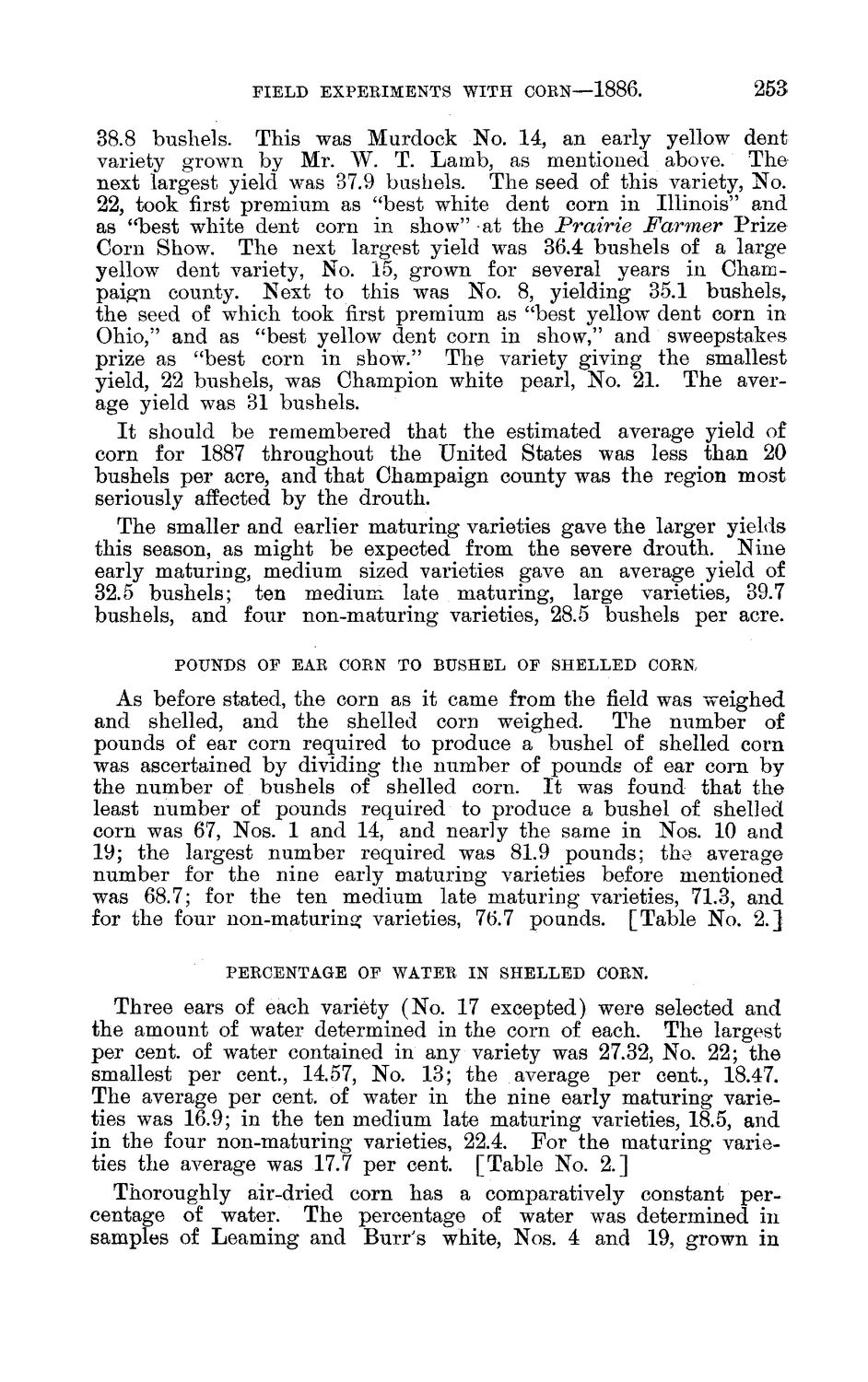| |
| |
Caption: Board of Trustees Minutes - 1888
This is a reduced-resolution page image for fast online browsing.

EXTRACTED TEXT FROM PAGE:
FIELD EXPERIMENTS WITH CORN—1886. 253 38.8 bushels. This was Murdock No. 14, an early yellow dent variety grown by Mr. W. T. Lamb, as mentioned above. The next largest yield was 37.9 bushels. The seed of this variety, No. 22, took first premium as "best white dent corn in Illinois" and as "best white dent corn in show" at the Prairie Farmer Prize Corn Show. The next largest yield was 36.4 bushels of a large yellow dent variety, No. 15, grown for several years in Champaign county. Next to this was No. 8, yielding 35.1 bushels, the seed of which took first premium as "best yellow dent corn in Ohio," and as "best yellow dent corn in show," and sweepstakes prize as "best corn in show." The variety giving the smallest yield, 22 bushels, was Champion white pearl, No. 21. The average yield was 31 bushels. I t should be remembered that the estimated average yield of corn for 1887 throughout the United States was less than 20 bushels per acre, and that Champaign county was the region most seriously affected by the drouth. The smaller and earlier maturing varieties gave the larger yields this season, as might be expected from the severe drouth. Nine early maturing, medium sized varieties gave an average yield of 32.5 bushels; ten medium late maturing, large varieties, 39.7 bushels, and four non-maturing varieties, 28.5 bushels per acre. POUNDS OF EAR CORN TO BUSHEL OF SHELLED CORN, As before stated, the corn as it came from the field was weighed and shelled, and the shelled corn weighed. The number of pounds of ear corn required to produce a bushel of shelled corn was ascertained by dividing the number of pounds of ear corn by the number of bushels of shelled corn. I t was found that the least number of pounds required to produce a bushel of shelled corn was 67, Nos. 1 and 14, and nearly the same in Nos. 10 and 19; the largest number required was 81.9 pounds; the average number for the nine early maturing varieties before mentioned was 68.7; for the ten medium late maturing varieties, 71.3, and for the four non-maturing varieties, 76.7 pounds. [Table No. 2.] PERCENTAGE OF WATER IN SHELLED CORN. Three ears of each variety (No. 17 excepted) were selected and the amount of water determined in the corn of each. The largest per cent, of water contained in any variety was 27.32, No. 22; the smallest per cent., 14.57, No. 13; the average per cent., 18.47. The average per cent, of water in the nine early maturing varieties was 16.9; in the ten medium late maturing varieties, 18.5, and in the four non-maturing varieties, 22.4. For the maturing varieties the average was 17.7 per cent. [Table No. 2.] Thoroughly air-dried corn has a comparatively constant percentage of water. The percentage of water was determined in samples of Learning and Burr's white, Nos. 4 and 19, grown in
| |